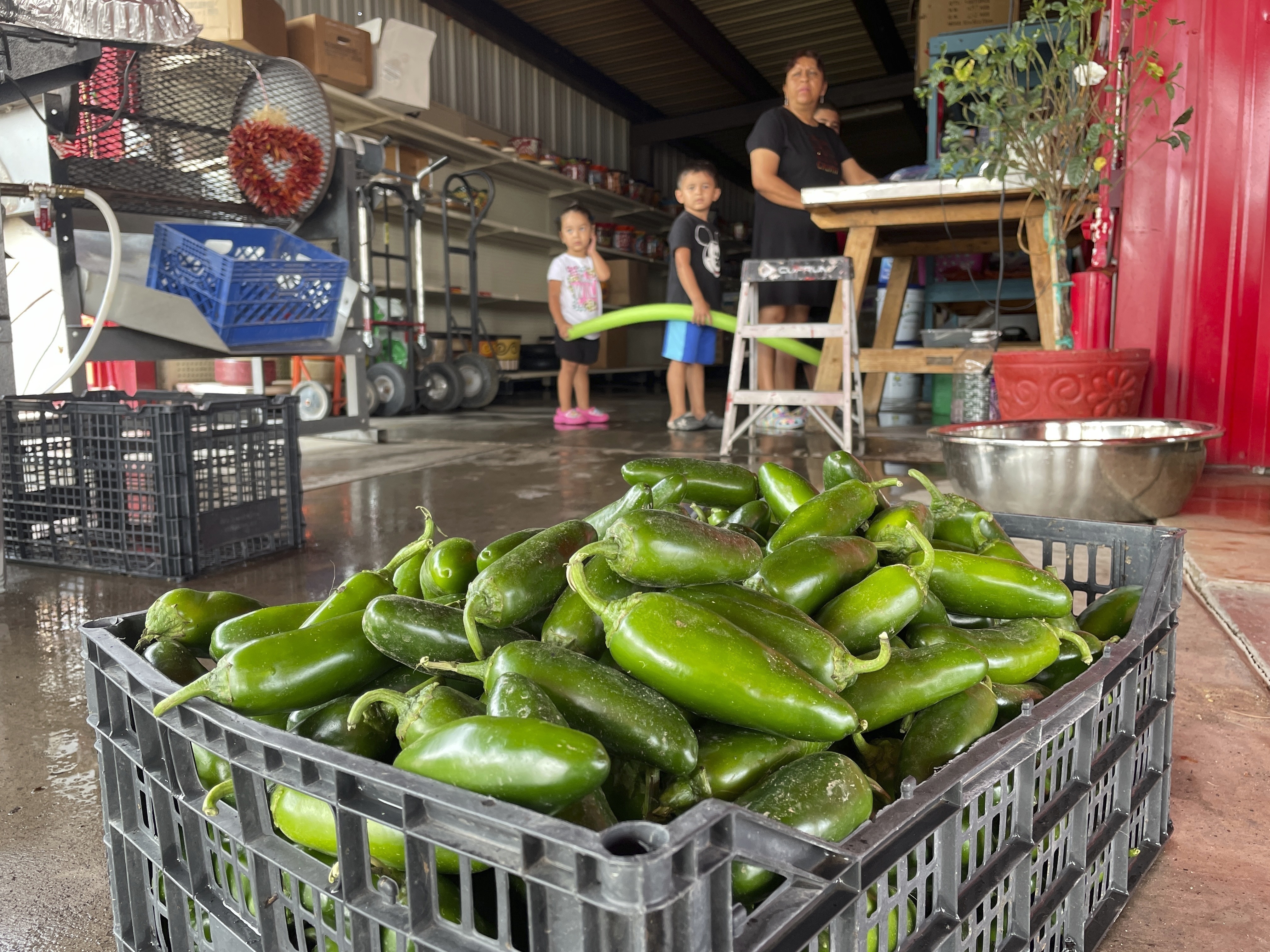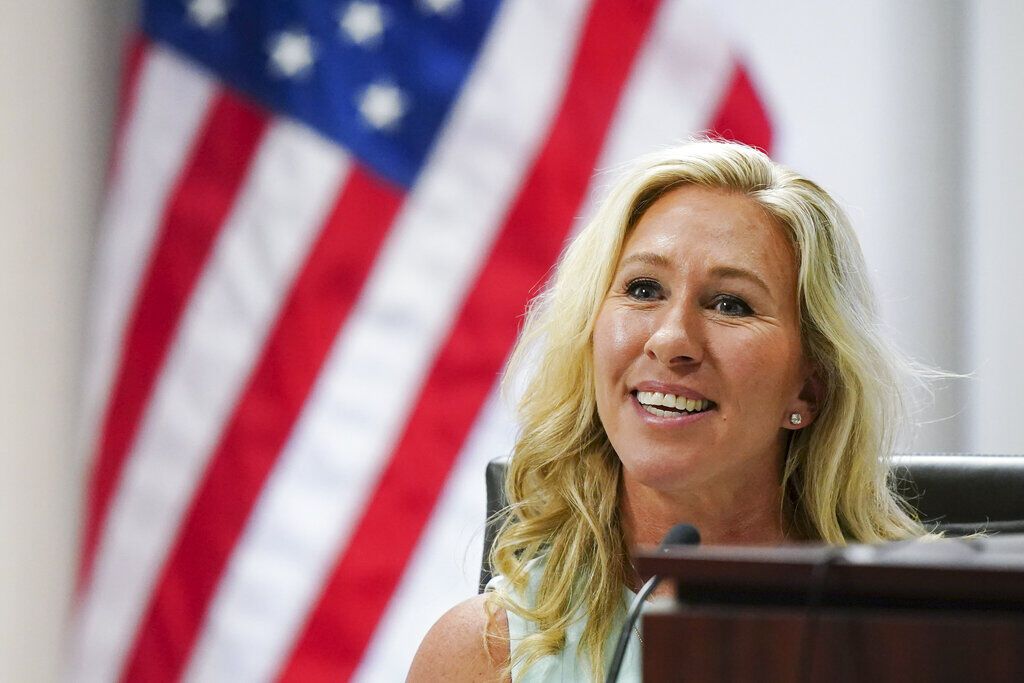New Mexico boosts chile production, adopts roasting chile as state aroma | OUT WEST ROUNDUP

NEW MEXICO
State boosts chile production, adopts official aroma
ALBUQUERQUE – New Mexico produced more than 53,000 tons of its most famous crop during the last growing season, meaning more chile peppers found their way into salsas and onto dinner plates than the previous year.
State and federal agriculture officials rolled out the latest numbers in late March as New Mexico’s governor signed legislation that established the sweet smell of green chile roasting in the fall as the state’s official aroma.
New Mexico’s love affair with the hot peppers runs deep. Chile is one of the official state vegetables, it’s on license plates and it forms the basis of the state’s official question: “Red or Green?”
The numbers released by the U.S. Department of Agriculture and the New Mexico Department of Agriculture show that more than 90% of the chile produced in 2022 was of the green variety.
The value of the crop was estimated at more than $46 million, about $1 million more than in 2021. Chile used for processing – for salsas, sauces and spices, for example – account for most of that value while fresh chile brought in about $4.4 million.
While production was up, the land used for planting was actually less than in 2021. That’s because farmers are seeing higher yields from their crops due to irrigation and cultivation improvements, said Travis Day, executive director of the New Mexico Chile Association.
Oil company settles over emission violations
ALBUQUERQUE – A Texas oil company has reached a $6.2 million settlement with the federal government and the state of New Mexico to resolve air pollution violations.
State and federal environmental regulators announced the settlement with Matador Production Co. on March 27.
They say the company agreed to comply with clean air regulations at all of its 239 oil and natural gas well pads in New Mexico, which is home to part of the Permian Basin, one of the most productive oil and gas regions in the world.
Regulators had accused the company of failing to capture and control emissions from its storage tanks. They also say the company failed to obtain required permits at more than two dozen of its production operations in the state.
Matador said it already has seen improvements in operations and emissions controls since 2019. The company pointed to 2022 emissions data for its gross operated production and exploration operations, saying the intensity of direct greenhouse gas emissions decreased by 55% and methane emissions by 70%.
Under the settlement agreement, the U.S. Environmental Protection Agency and the New Mexico Environment Department said Matador will be the first producer to implement measures that will serve as a model in future resolutions involving other producers.
WYOMING
State’s suicide rate falls for 1st time in 4 years
CHEYENNE – Wyoming’s suicide rate has fluctuated in the past decade, but mental health advocates are celebrating the first drop in recorded suicides since 2018.
The Wyoming Department of Health reported in March that the number of suicides among Wyoming residents decreased from 190 in 2021 to 149 last year. This was a substantial percentage change of 21.6%, compared to the decrease recorded between 2017 and 2018, when the number of suicides statewide dropped from 156 to 148.
WDH Director Stefan Johansson said several factors could be involved, including increased attention toward mental health issues.
Wyoming’s suicide rate has climbed overall since 2013, when there were 128 deaths recorded, yet there have been decreases in 2014, 2016 and 2018. The highest point was 2021.
Despite Wyoming leading the nation in its per-capita suicide rate, the data to work with is still small. Wyoming Association of Mental Health and Substance Abuse Centers Director Andi Summerville said this makes it difficult to track and isolate factors that impact the rate. However, she said the association believes the introduction of the 988 hotline number and call centers running 24/7 with Wyoming-based personnel since last July have benefited residents.
Wyoming was the last state to implement its own call centers in August 2020, and they have received more than 10,000 calls since then. Nearly 25% of the calls received are from veterans seeking services on the specialty line designated for them.
ARIZONA
Apaches tell court copper mine would harm sacred sites
PHOENIX – A Native American group that’s trying to stop an effort to build one of the largest copper mines in the United States told a full federal appeals court panel on March 21 that the project would prevent Apaches from exercising their religion by destroying land they consider sacred.
U.S. federal government plans for a land swap that will allow Resolution Copper to build the mine will destroy the land in eastern Arizona known as Oak Flat, “barring the Apaches from ever accessing it again and ending their core religious practices forever,” said attorney Luke Goodrich, arguing for the group Apache Stronghold.
The panel of 11 judges on the 9th U.S. Circuit Court of Appeals is expected to issue a decision in the next few months.
Apache Stronghold sued the U.S. government under the Religious Freedom Restoration Act to protect the place tribal members call Chi’chil Bildagoteel, an area dotted with ancient oak groves and traditional plants the Apaches consider essential to their religion.
U.S. government attorney Joan Pepin argued that the act of Congress that approved the exchange giving the Oak Flat to Resolution Copper land supersedes the Religious Freedom Restoration Act, which prevents government agencies from placing a “substantial burden” on the practice of religion.
The land transfer was a last-minute provision included in a must-pass defense bill in 2014. The swap would give the mining company 3.75 square miles of national forest land in exchange for eight parcels it owns in other parts of Arizona.
Resolution Copper says the project has the potential to supply enough copper to meet up to one-quarter of U.S. demand, adding up to $1 billion a year to Arizona’s economy and creating thousands of local jobs.
UTAH
Mormon Church gives water to boost Great Salt Lake
SALT LAKE CITY – Donating a small reservoir’s worth of water rights to Utah’s Great Salt Lake. Replacing grass with rocks and water-wise landscaping around neatly manicured churches. Reducing water use by more than one-third outside the headquarters in Salt Lake City’s Temple Square. These are among the actions that the Utah-based Church of Jesus Christ of Latter-day Saints is taking to address the realities of a rapidly approaching, drier future.
Remarks from Bishop Christopher Waddell at the University of Utah on March 16 underscored how the church – one of the biggest land and water rights holders in the western United States – is expanding its role in conservation and looking for solutions “that protect the future for all God’s children.”
Church officials announced days earlier that they planned to donate roughly 20,000 acre-feet of water rights to the Great Salt Lake, which has shrunk to its lowest levels ever due to a supply-demand imbalance caused by decadeslong regional drought. The church has at least 75,000 acre-feet of active water rights, the Salt Lake Tribune reported in February.
The church’s donation is about 2% of what’s needed to keep the lake at its current level, according to research from a group of scientists led by Brigham Young University ecologist Ben Abbott.
“It’s a drop in the bucket on one level, but it’s also a big drop,” Abbott said of the church’s donation.













